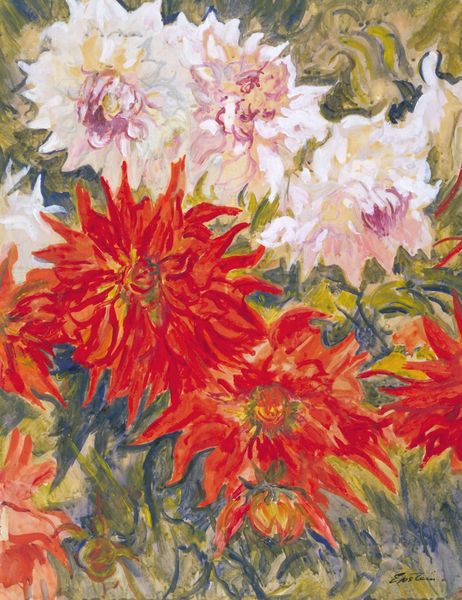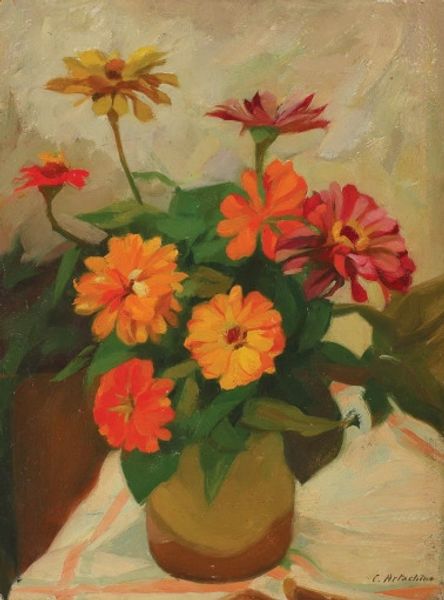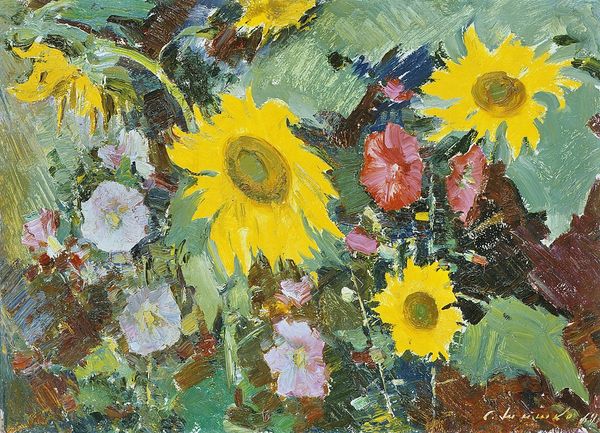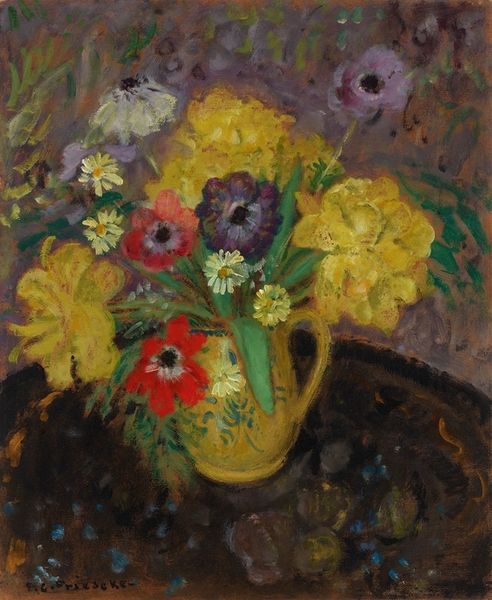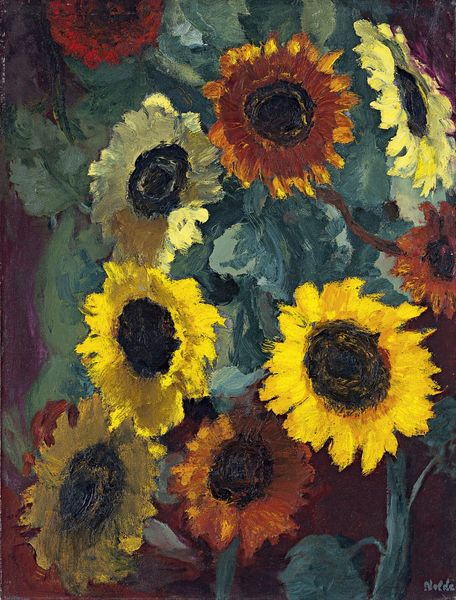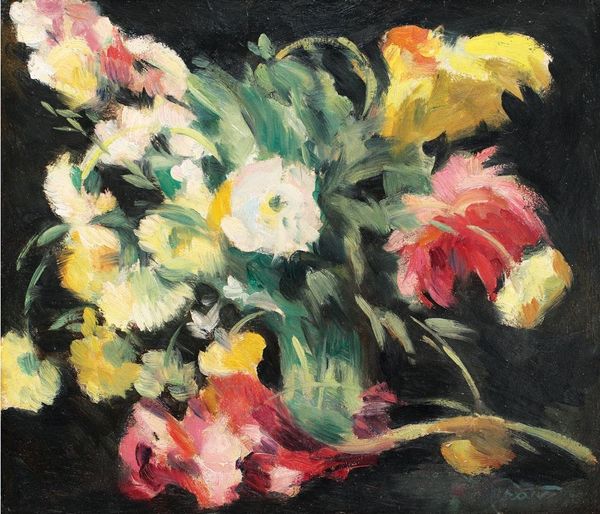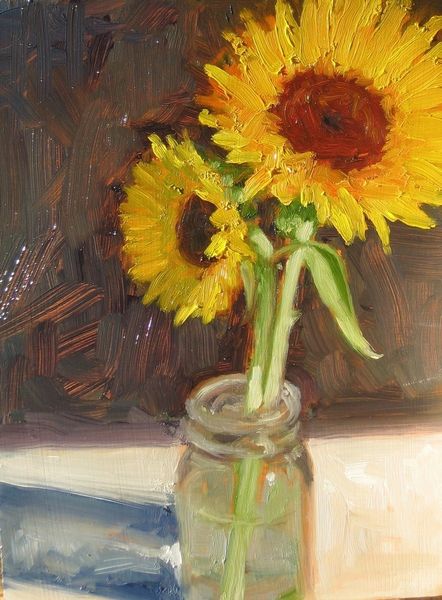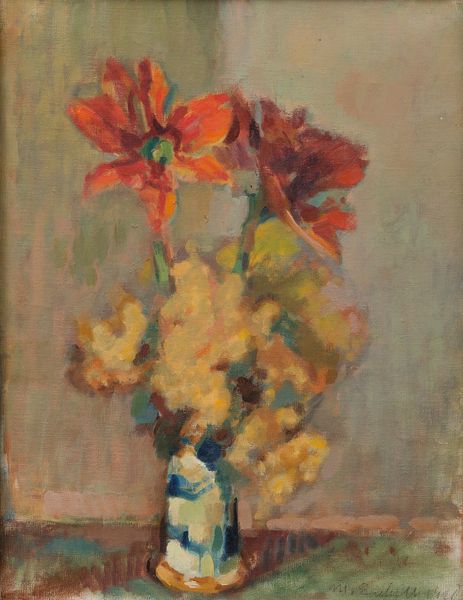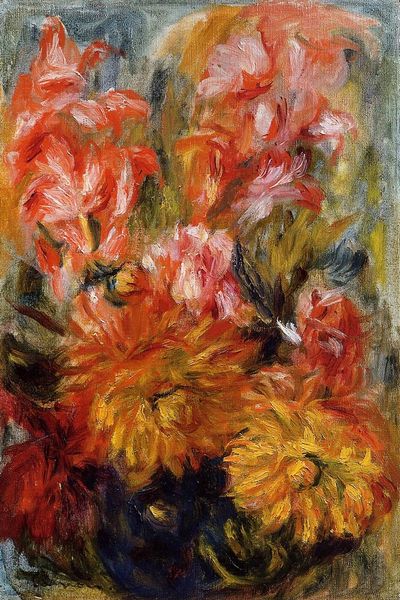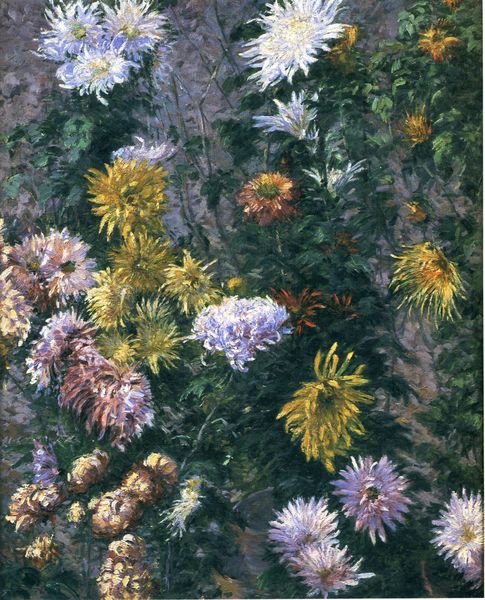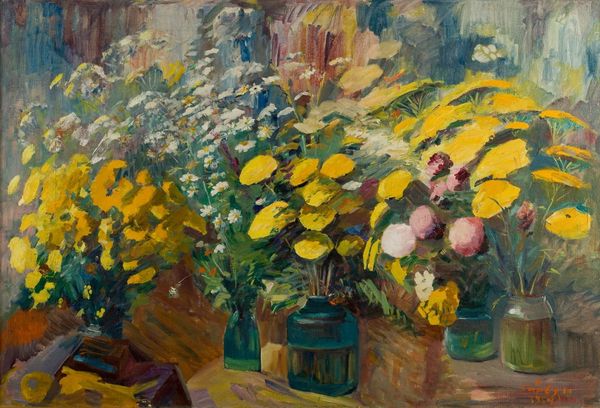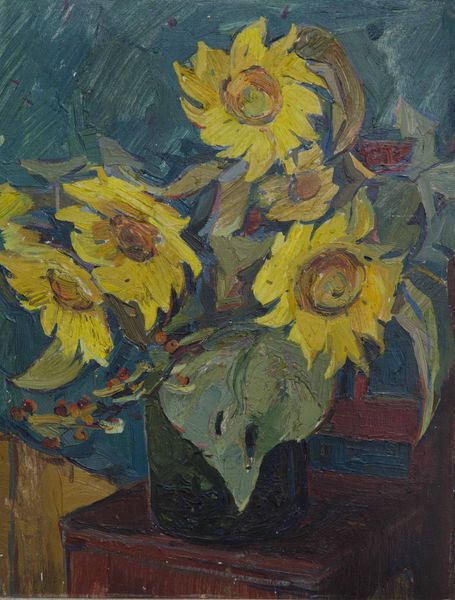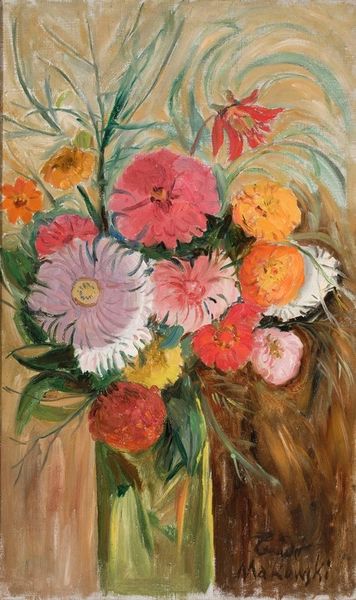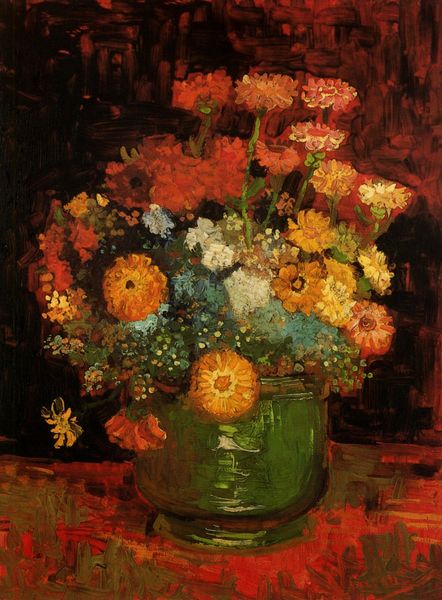
painting, oil-paint, impasto
#
painting
#
oil-paint
#
landscape
#
oil painting
#
impasto
#
post-impressionism
Copyright: Public Domain: Artvee
Curator: Immediately striking are the forceful brushstrokes—it looks like these chrysanthemums are ablaze with autumnal fire. Editor: Indeed, the energy is palpable! This is Piet Mondrian’s “Drie Chrysanten,” or "Three Chrysanthemums," painted around 1899 to 1900. Mondrian utilized oil paint and a pronounced impasto technique. Curator: Flowers often represent fragility and ephemeral beauty in art. But here, they seem almost defiant, fighting against fading away. I can't help thinking about the cultural weight flowers carry with them in the language of symbolism: rebirth, mortality, even forbidden love, according to period. Editor: Absolutely, and looking at Mondrian's trajectory, knowing he ultimately rejected representational art makes these somewhat conventional blooms fascinating. Considering the Netherlands was entering an era of immense social and political upheaval during the late 19th Century— with a focus on women’s liberation — one could argue that chrysanthemums symbolized new beginnings, signaling shifting cultural paradigms for self expression. Curator: That contextual reading casts a fresh light on what I initially perceived as a traditional still life. The choice of chrysanthemums itself feels pointed; in some East Asian cultures, they're linked with longevity. And in other settings, they stand for something lost or forbidden. Editor: Exactly! It encourages me to reflect on how the same object can contain drastically different symbolic narratives depending on social and cultural locations. Do the figures, particularly women who cultivated chrysanthemums and achieved significant social advancements during this historical moment, take part in the same symbolic reading? And do you also interpret their wilting form as symbolic to any meaning behind decay? Curator: What intrigues me is the tension between representation and abstraction. Mondrian hints at his future path, the petals becoming less about accurate depiction and more about pure form and texture. One cannot see such form merely at face value without also considering our modern and future states to come, according to tradition, culture and history. Editor: And it shows, too, in how these seemingly traditional subjects start dismantling into components. Mondrian is beginning to challenge assumptions, encouraging us to see beyond the obvious, searching within to uncover and deconstruct the flower for redefinition. Curator: Thinking about this work now, I feel it bridges so many fascinating perspectives, a single symbol, these flowers, charged with historical meaning, Mondrian’s personal journey and even future directions in abstraction. Editor: Right? This is how "Drie Chrysanten" opens doors for discussions about both the artist’s evolution and art’s capability in communicating meaning over diverse sociocultural viewpoints.
Comments
No comments
Be the first to comment and join the conversation on the ultimate creative platform.
